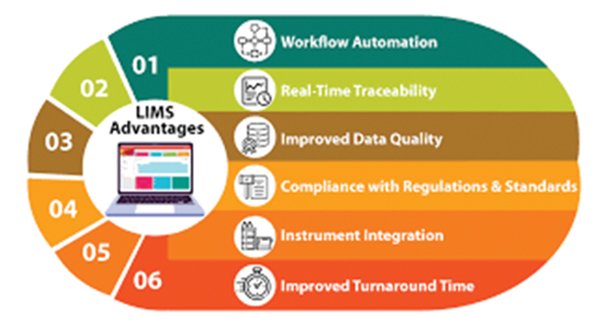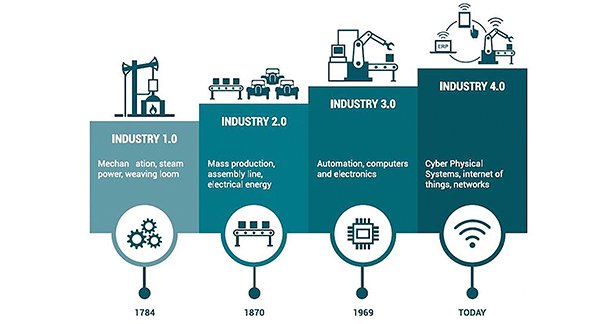In laboratories worldwide, a quiet transformation is taking place. Once defined by manual processes and paper records, the modern lab is now a highly digitized, intelligent environment where data flows seamlessly from instruments to decision-makers in real time.
Yet, for much of the 20th century, laboratories remained manual, fragmented, and highly dependent on human oversight. Results often took days to generate and even longer to verify. But the 21st century has ushered in a quiet revolution—driven by data, digitization, and automation. Today’s labs are smarter, faster, and more integrated than ever before. From AI-powered instruments to real-time microbial detection, the transformation is redefining what laboratories can do—and how quickly they can do it.
l A Brief Look Back: Traditional Lab Tools and Their Limitations
For decades, laboratory workflows followed a largely manual and linear process. Analysts received samples, logged them in paper notebooks or spreadsheets, prepared them by hand, and operated standalone instruments that offered little in the way of integration or data capture.
Microbiological testing depended heavily on culture-based methods—incubating agar plates for up to 120 hours to assess microbial growth. Analytical chemistry relied on instruments like pH meters, titrators, or spectrophotometers that required calibration and interpretation by skilled personnel. Data transfer was a matter of printing results and retyping them into reports.
l Industry 4.0 – The Lab Joins the Smart Manufacturing Revolution
As industries move into the era of Industry 4.0, laboratories are becoming critical players in the digital value chain. Often described as the “Fourth Industrial Revolution,” Industry 4.0 emphasizes the integration of cyber-physical systems, IoT, cloud computing, and AI to create smart, self-optimizing environments.

In the laboratory context, this means:
- IoT-enabled instruments that share real-time performance data
- Cloud-based LIMS platforms that integrate with ERP and MES systems
- Predictive analytics that guide testing strategies and equipment maintenance
- Digital twins of lab processes for simulation, optimization, and remote troubleshooting
For example, a food manufacturing company using Industry 4.0 principles might link its production line with lab data so that if an online monitor detects a pH deviation or microbial risk, both the product flow and lab testing protocols adjust automatically.
Here a few examples of Digital laboratory
1. LIMS – The Lab’s Digital Brain
Imagine never losing sample or misplacing test data again. That’s the peace of mind LIMS offers.
The Laboratory Information Management System (LIMS) is one of the most transformative technologies to enter the lab environment. What began as a digital sample tracking tool has evolved into a comprehensive data and workflow management system—centralizing laboratory operations under one unified digital platform.
Why Labs Need LIMS?
A LIMS is like a google maps for your samples- it tracks where they’ve been, where they are, and where they’re going. LIMS offers critical benefits:
- Sample Tracking: From sample login to disposal, every step is recorded. You know exactly what was tested, by whom, when, and how.
- Instrument Integration: LIMS can be connected to instruments like HPLC, GC, Weighing balances, and spectrophotometers to directly import data—eliminating manual entry errors.
- Quality Control: It supports calibration reminders, preventive maintenance tracking, and control charting, ensuring your lab meets ISO, FDA, and GMP standards.
- Audit Trails: Every change in the system is logged, offering transparency and traceability for audits or investigations.
- Report Generation: Customized, automated reports for clients, regulators, or internal QA teams make communication seamless.
2. Rapid Microbiology – Speed Meets Precision
Traditional microbiology methods, although scientifically sound, are inherently slow. Waiting 3–5 days for microbial results is no longer feasible in industries that demand fast product release, real-time risk assessment, or early contamination detection. Enter Rapid Microbiological Methods (RMMs)—a suite of technologies designed to detect, quantify, and identify microorganisms faster and more reliably.
Benefits of Rapid Micro Tools:
- Faster release of products (especially in pharma & food).
- Real-time contamination alerts during production.
- Integration with LIMS enables instant result logging, tracking, and trend analysis.
- Enhanced compliance with international guidelines.
3. SCADA and Online Monitoring – Real-Time Control Beyond the Bench
As laboratory operations extend beyond the test bench to include environmental and utility monitoring, SCADA (Supervisory Control and Data Acquisition) systems have become essential. Originally designed for industrial process control, SCADA systems are now fully integrated into advanced laboratory and manufacturing environments.
SCADA platforms continuously monitor critical parameters such as:
- Cleanroom pressure differentials
- Humidity and temperature
- Conductivity and TOC
- Compressed gas supply and flow
SCADA is most powerful when integrated with LIMS and Building Management Systems (BMS). This integration ensures that environmental data affecting test conditions are traceable alongside analytical results, fulfilling regulatory expectations for control and documentation.

4. Mobile Testing Labs – Taking Quality to the Field
In India, the Food Safety and Standards Authority of India (FSSAI) has introduced an innovative step in public health protection through mobile food testing laboratories, often referred to as Food Safety on Wheels. These mobile labs are equipped with basic chemical and microbiological testing tools to detect common food adulterants—right on the spot.
Each mobile unit includes:
- Basic rapid test kits for contaminants like pesticides, formalin, and artificial colors
- Facilities for microbiological testing of water and food samples
- Interactive displays and educational materials for community awareness
Beyond testing, these units also act as outreach vehicles, helping educate vendors, students, and consumers about food safety and hygiene.
As mobile lab technology improves, there’s growing potential to integrate LIMS, GPS tracking, and real-time data transmission into these units—turning them into powerful surveillance tools for remote and underserved areas.
FSSAI’s mobile lab initiative illustrates how lab technology is no longer confined to the lab—it’s now rolling across streets, markets, and festivals, ensuring food safety at the grassroots level.
- The Digital Revolution Behind Faster, Safer, and Smarter Testing
Robotic platforms are increasingly used for sample preparation, weighing, dilution, and reagent handling—operations traditionally vulnerable to human error. These systems improve consistency and are especially beneficial in high-throughput environments such as pharmaceutical QC labs or genomic research centers.
Moreover, AI-powered software tools are emerging that analyze raw data to detect trends, outliers, and potential data integrity issues before they become critical. Instead of relying solely on human interpretation, laboratories can now lean on intelligent systems for faster, more consistent, and auditable results.
This convergence of hardware and AI enhances both efficiency and reliability, ensuring that complex analytical work meets the highest standards of precision without compromising throughput or compliance.
This end-to-end integration brings several benefits:
- Reduced turnaround time from sample receipt to report generation
- Improved data integrity by minimizing manual intervention
- Real-time visibility across operations, instruments, and environments
- Regulatory readiness through full traceability and audit trails
The result is a lab that no longer functions in silos, but as a coordinated digital ecosystem, capable of making decisions, detecting risks, and supporting compliance at every step.
l Conclusion – A Smarter Lab for a Safer World
The laboratory has undergone a remarkable transformation. What once depended on manual processes, paper records, and isolated instruments is now driven by interconnected systems, artificial intelligence, and real-time monitoring. This evolution is not just about efficiency—it’s about safety, accuracy, traceability, and public trust.
Whether testing drinking water, verifying pharmaceutical purity, or ensuring food safety, today’s advanced laboratory infrastructure enables faster decisions, fewer errors, and greater compliance. LIMS, rapid microbiology platforms, smart instruments, and SCADA systems are no longer luxuries—they are essential tools in the pursuit of quality and safety.
As technology continues to advance, laboratories will become even more intuitive, intelligent, and integrated. In this future, science will not only move faster—it will move smarter.
About The Author
|
Author Ashutosh Jaiswal Food Safety Professional Email: ashuthewall@gmail.com Website: https://www.foodsafetywithashutosh.com |
|
Author Ayushi Shukla Food Safety Professional Email: ayushishukla2223@gmail.com |



